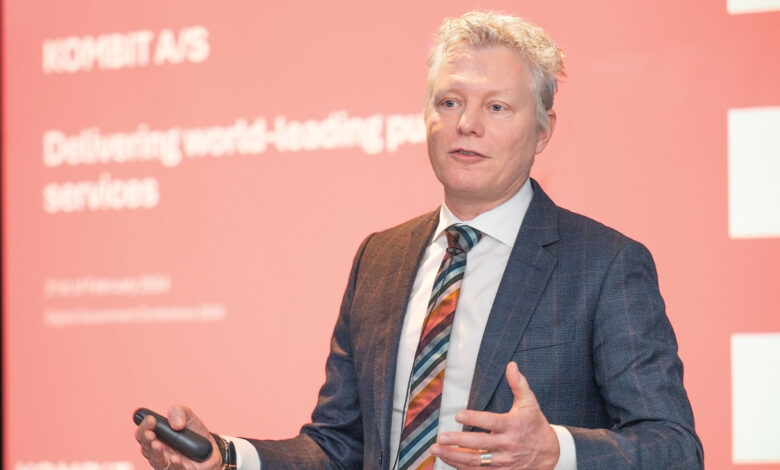World leading public services: A Danish perspective

Kristian Vengsgaard, CEO of Kombit A/S, an IT company supporting the digital change of Denmark’s municipalities, discusses the values of centralisation and trust in delivering digitalisation of public services.
Denmark sits atop of almost every report and survey on public sector digitalisation, underpinned by the decision to move early as a digital-first nation.
Denmark’s 98 municipalities are the largest by scale and responsibility of the country’s three layers of government, which also includes the State and regions. The economic importance of this layer can be seen by the fact that six out of 10 public servants are employed by the municipalities, while each municipality employs around 10 per cent of its citizens.
Vengsgaard explains that the municipalities have responsibility for much of the public sector work ranging from employment through to childcare, and public schools, however, a national conversation is ongoing around whether a reallocation of the responsibilities of the regions and the municipalities is required.
Despite being a digital leader, Denmark faces many similar challenges to other European countries with respect to the future of its public services. For example, recognition of an ageing population has opened up a discussion on the ability of the public sector and the availability of personnel to care for the elderly adequately.
“At the heart of this discussion is the technology versus people debate,” explains Vengsgaard, who frames it as the more commonly used Danish term of cold hands versus warm hands.
Fortunately, discussions are starting to turn to the fact that digitalisation and technology are not ‘cold hands’, but enablers of the right solutions for making the warm hands warmer, and do more warm work than would be possible.”
Alongside a recruitment challenge, Denmark also has rising welfare expectations from its citizens, made more difficult by the fact that the Danish culture has a broad definition of welfare, much of which is largely delivered by the public sector.
In addition, as like most of its European counterparts, the Danish governmental structure and democracy in general is under greater pressure. Despite Denmark recording one of the highest rates of confidence in public services of any EU member state, social agitation and misinformation campaigns have contributed to falling public trust levels in government.
This is happening in parallel with changing security concerns. Vengsgaard says that Russia’s invasion of Ukraine and subsequent changes to European and global security dynamics has destabilised how the Danes consider their security. This instability also relates to cyber security, where cyber has become a central component of warfare.
“As digital people, we need to understand that it is not all about security and developing new products. It is also about understanding that risk is quite different than it used to be.”
Early movers
Returning to the origins of Denmark’s digital journey, Vengsgaard admits that Danish citizens have benefitted from the timing of the Danish Government’s decision to digitalise in the early 2000s because, at the time, digitisation was not a hot political topic.
“Someone had the foresight to see that we could do much of the difficult things without the context of difficult political discussions. We were able to lay some of the groundwork quite early and we have been benefiting from that ever since.”
Some examples of those early moves include:
- digital post: Digital is mandatory for government-citizen interaction;
- NemKonto: All citizens and companies registered in Denmark are required to have a NemKonto, a mandatory bank account to receive payment from the public sector;
- MitID: A resident’s personal key to digital services in Denmark;
- digital income and tax; and
- digital driver licenses, digital health ID, and a digital school/parent communications platform.
Vengsgaard offers three considerations for the delivery of digital public services. The first is the need for an alliance between legislation and IT, working in advance to ensure that legislation is IT and digitise-ready, making it easier to implement and roll out solutions.
The second consideration is to ensure that technology delivers value for citizens. The CEO highlights an existing scenario where the capabilities of technology such as AI are being demonstrated, but these capabilities are not necessarily delivering benefits for citizens and exhibiting transformational change.
This, he explains, is linked to the third point, and the need for public digitalisation to solve global challenges. To this end, he asks the question: “If we have been using digital to do things more efficiently for the past 30 years, where has all that extra time gone?”
“It is an interesting question that we need to pose to ourselves in the next wave,” he states. “Because while we talk about AI being transformative, how do we ensure that does not mean even more work for us to do?
“We need to ensure that technology and human beings go hand in hand. That is more difficult than it sounds because the potential exists for technology to evolve faster than we can understand it.”
Concluding, Vengsgaard says: “In Denmark, we are struggling on the conversation to digitalise or not digitalise elements of the public service in a very different way than we used to. Similar to our neighbours, we are seeing a higher polarisation of the discussion.
“That means that we, as digital people, need to think about how we talk about this in a way that will continue to focus on the benefits for humans and not for the technology itself.”





